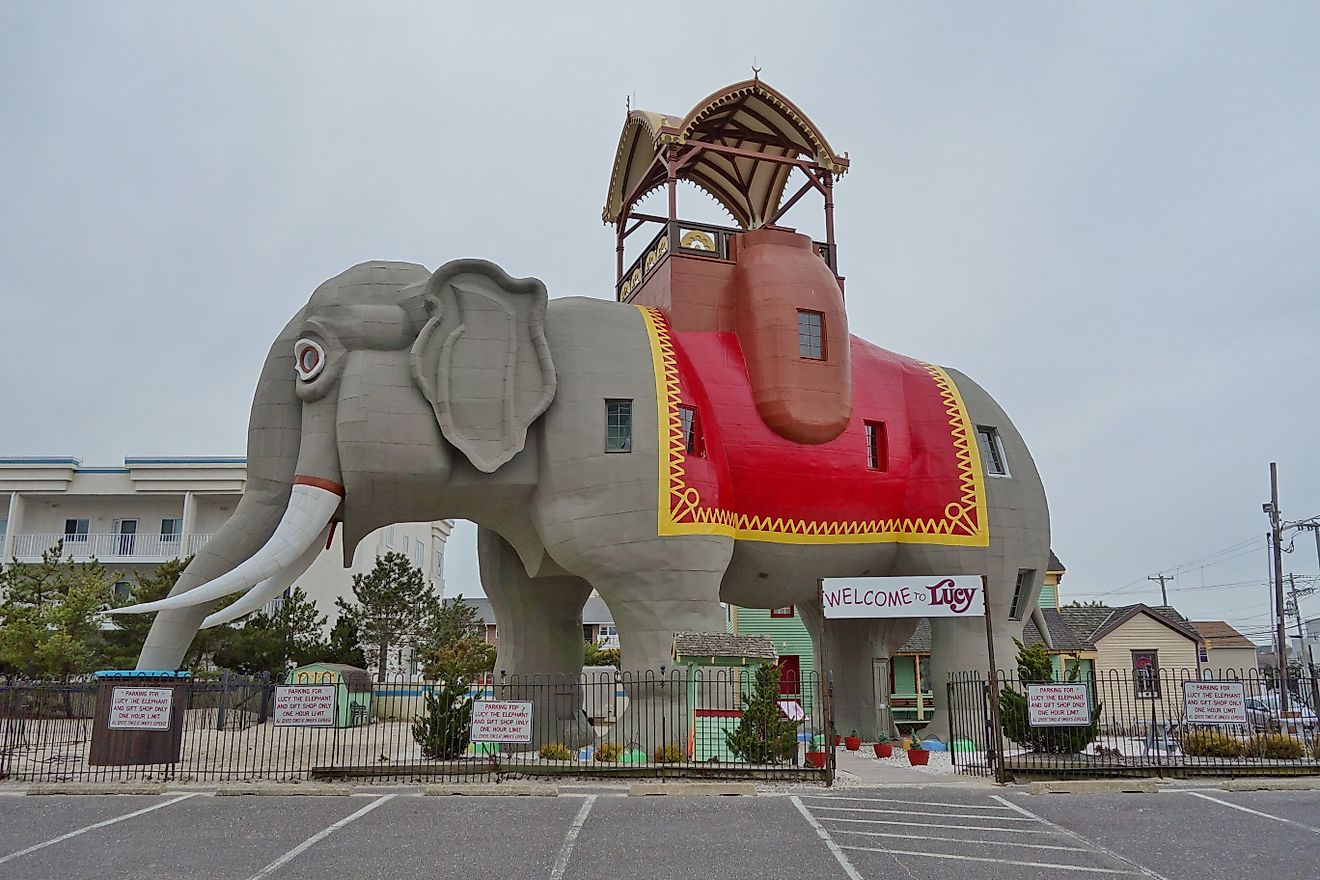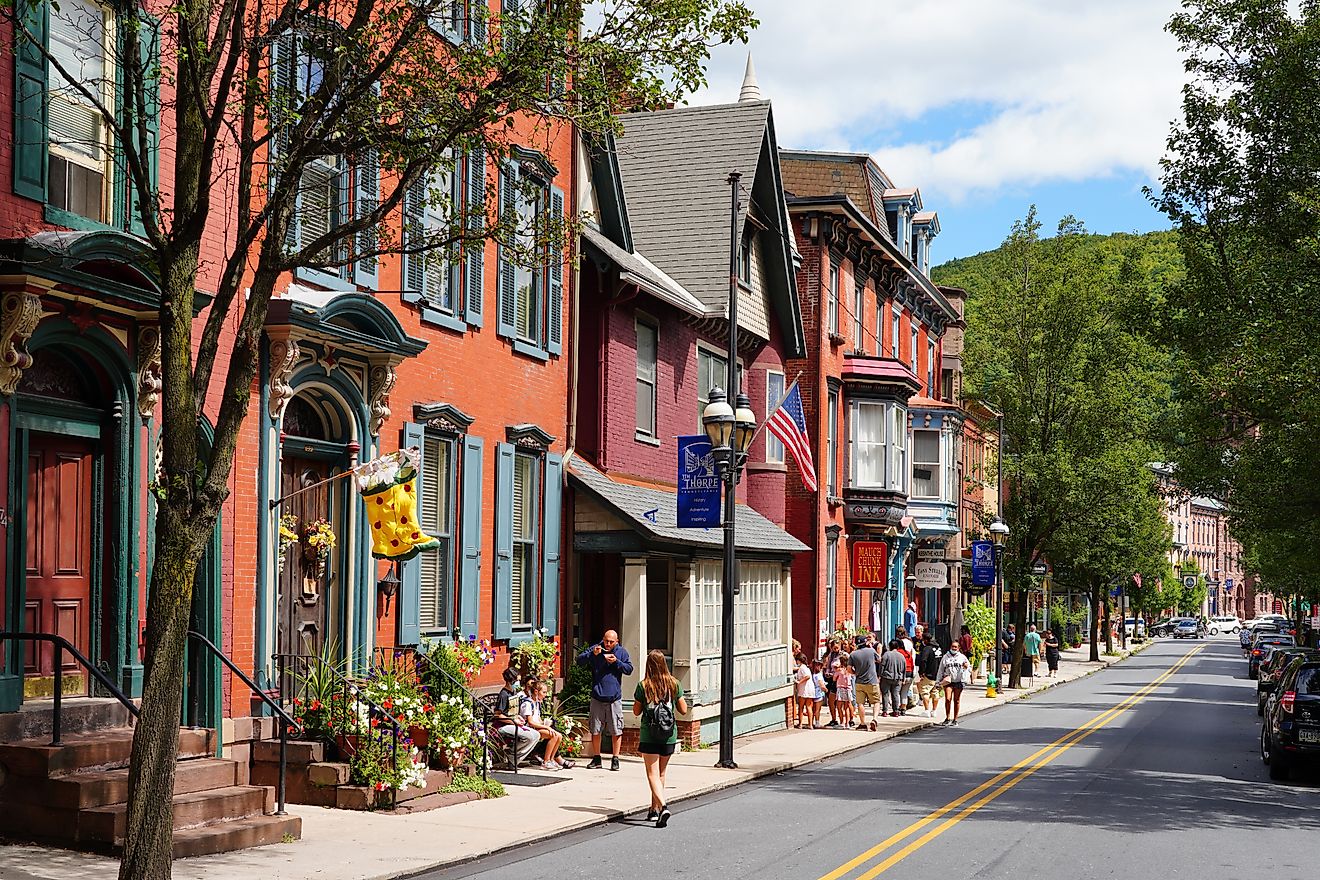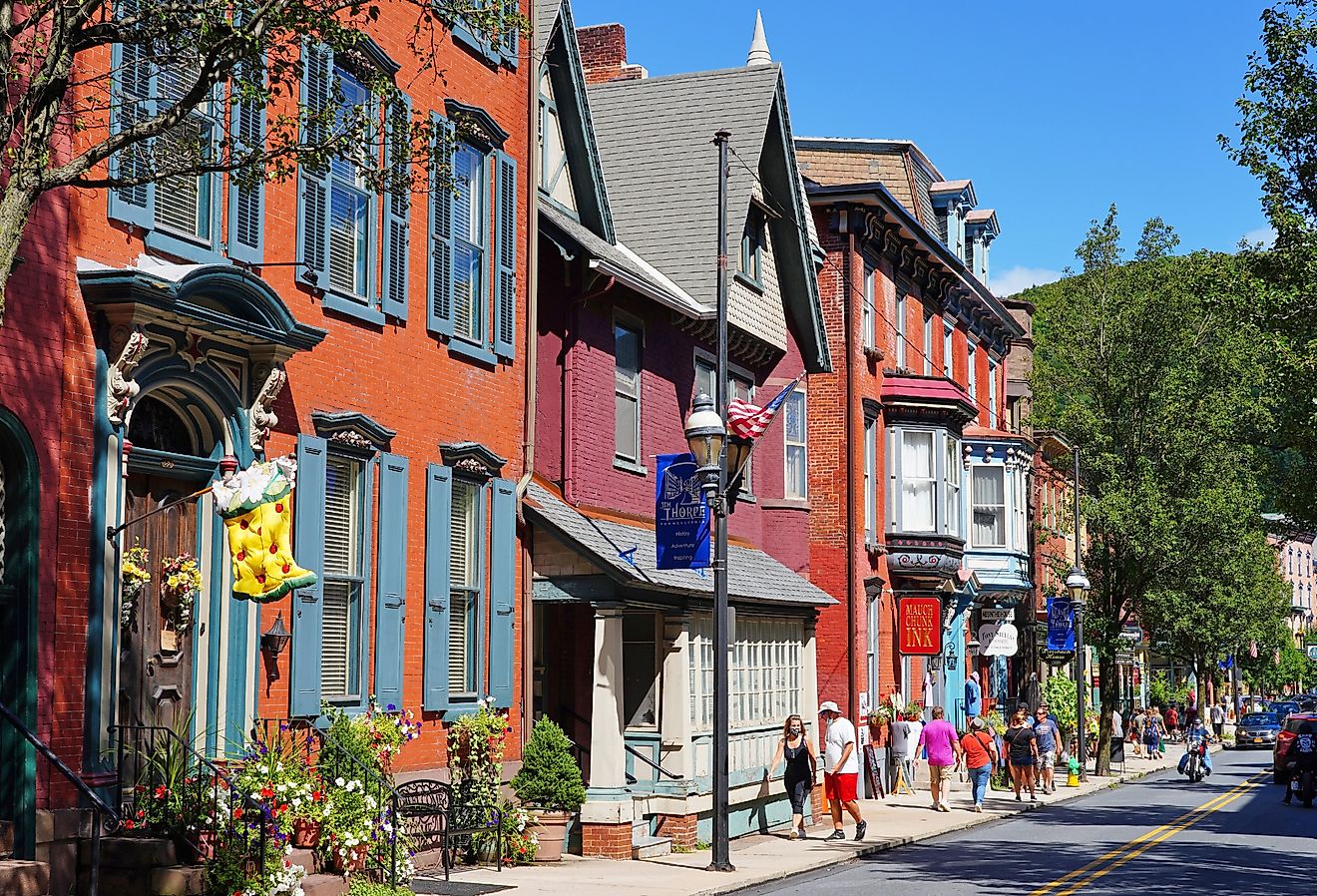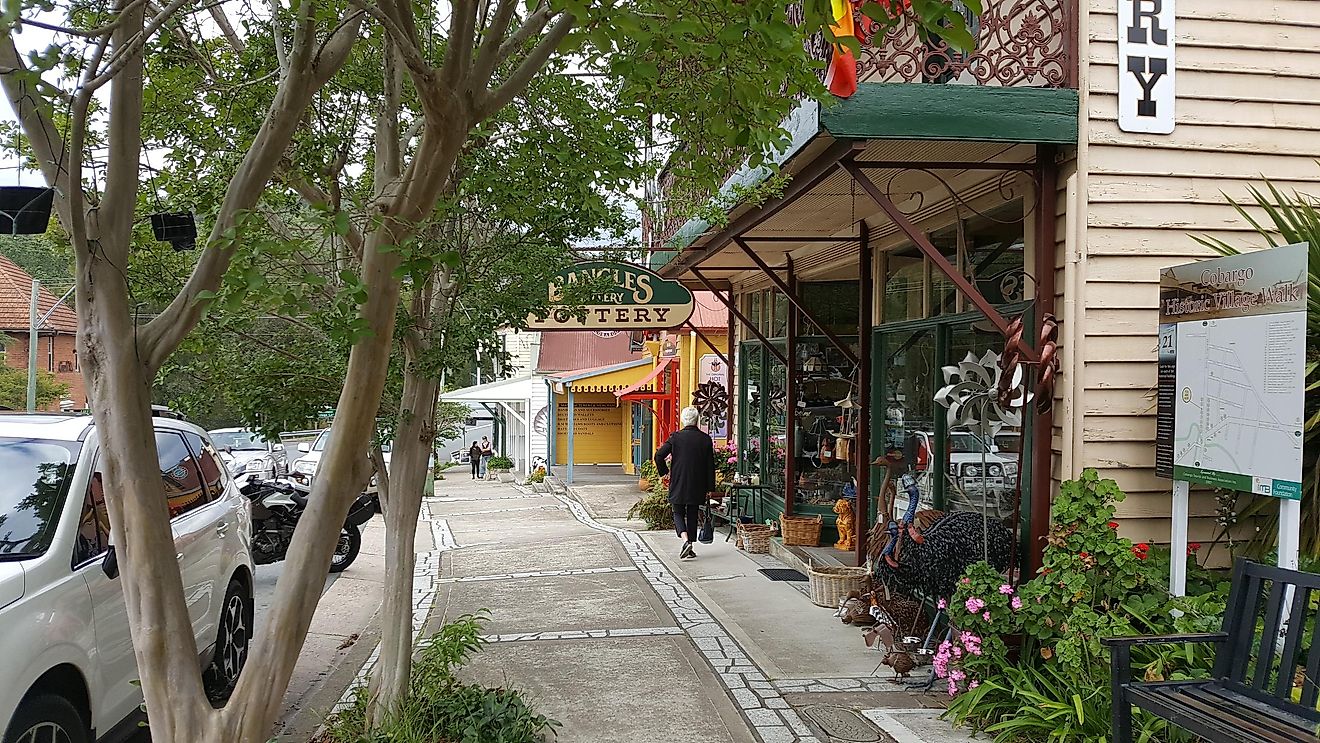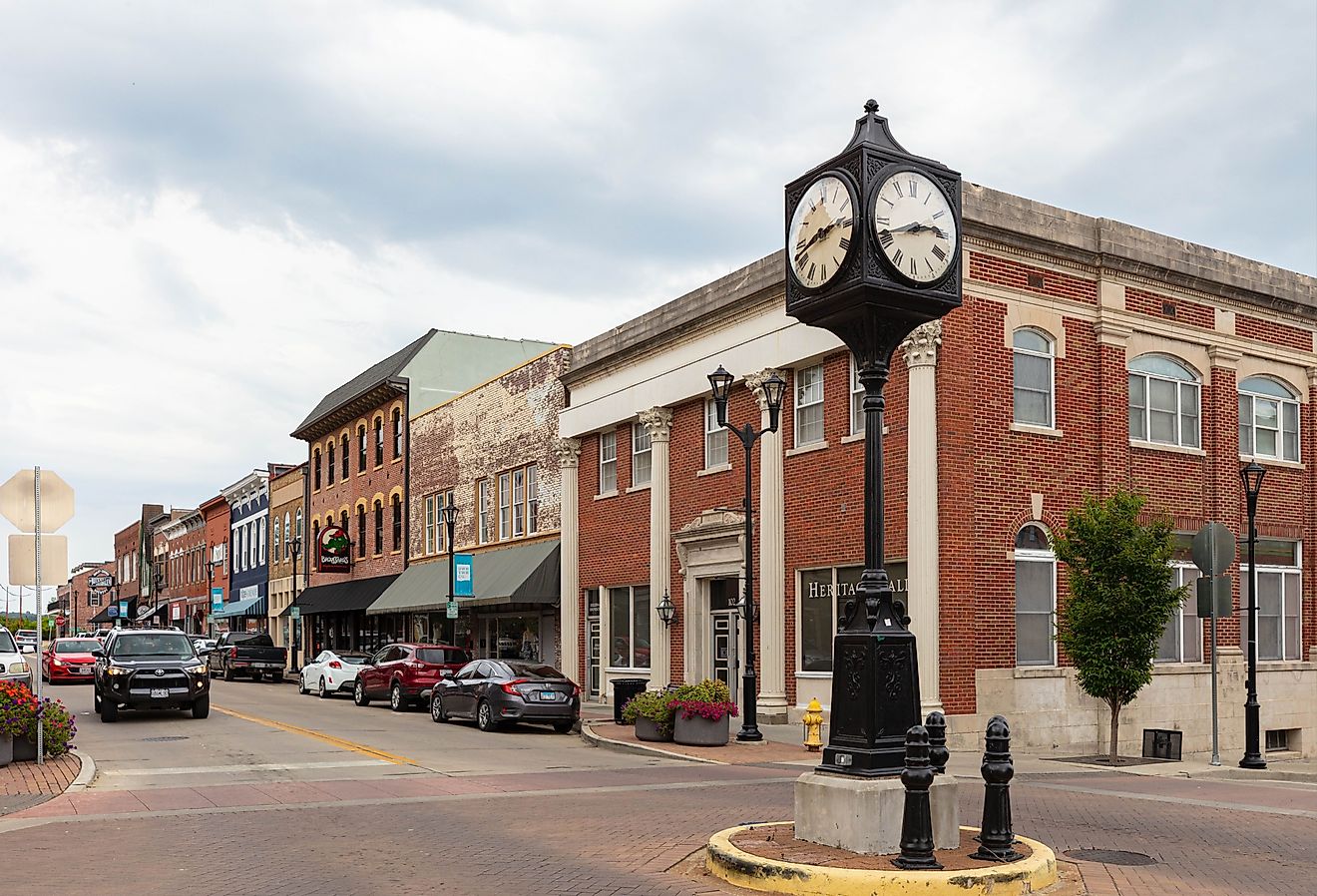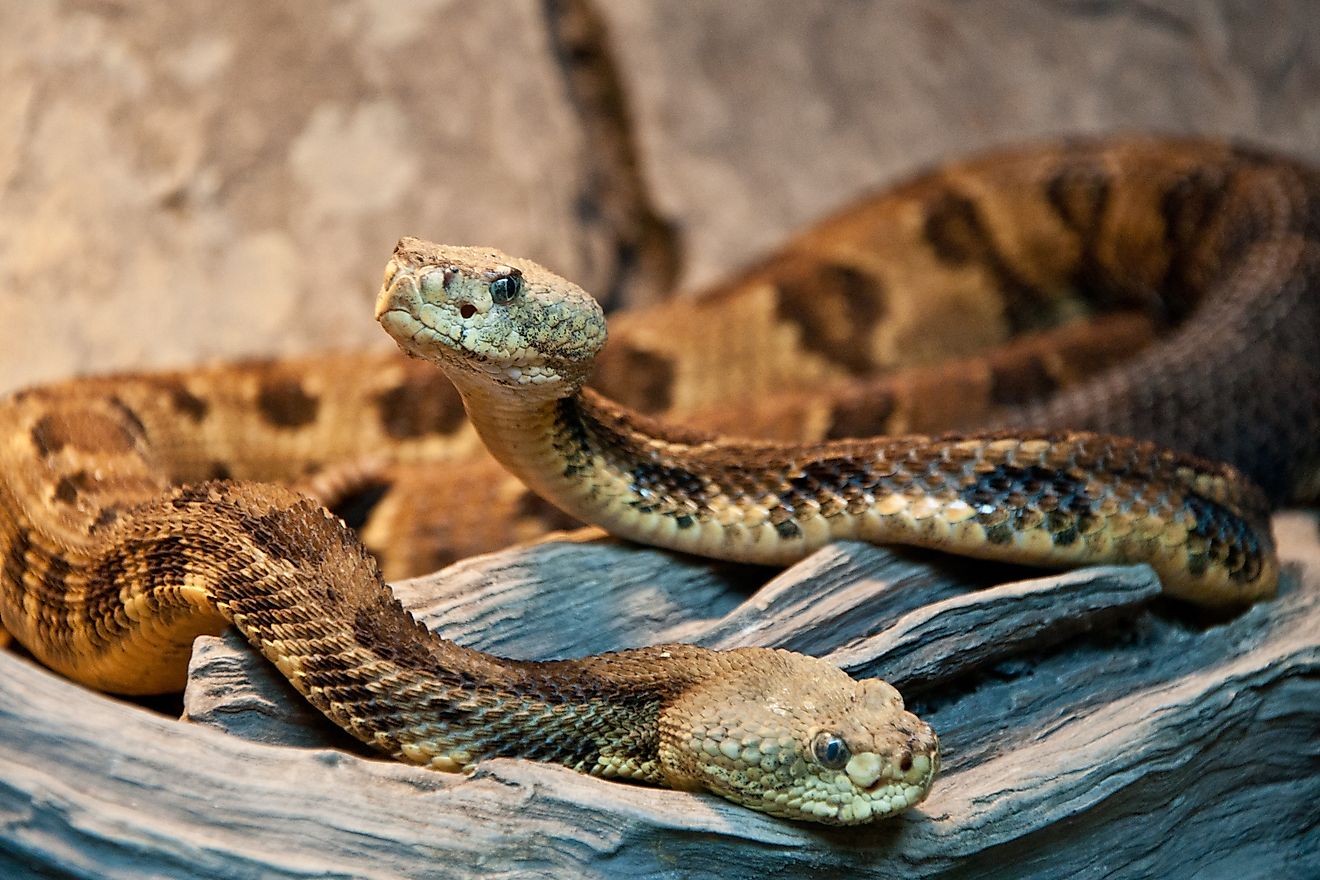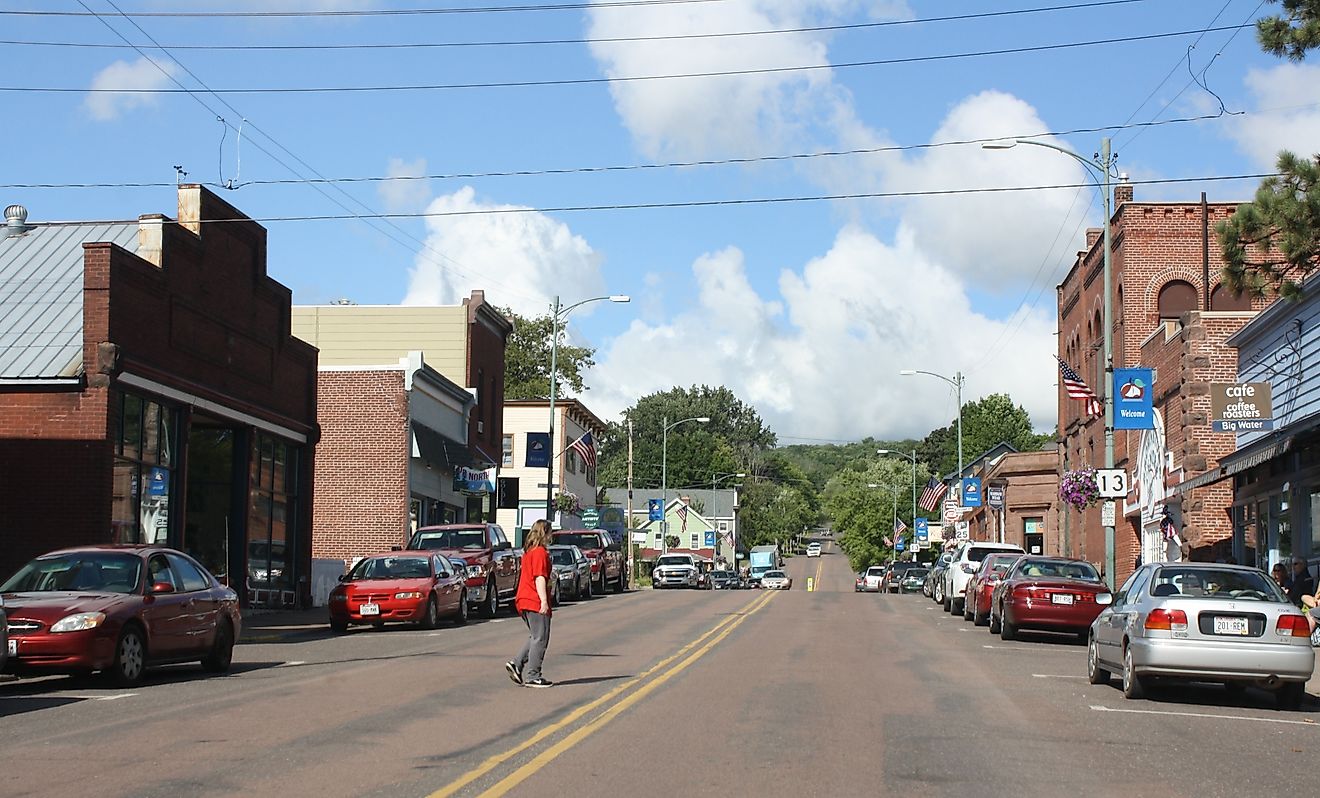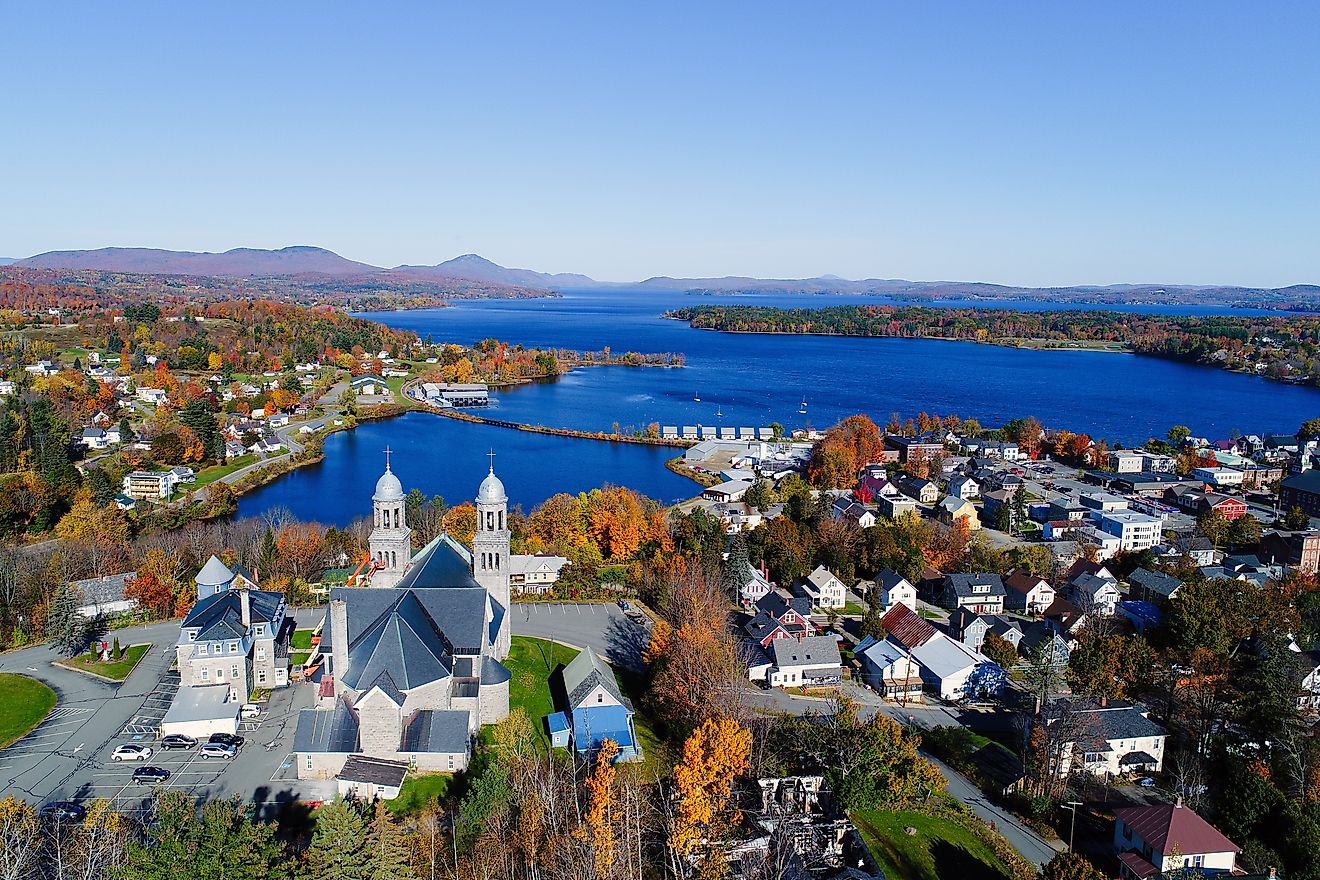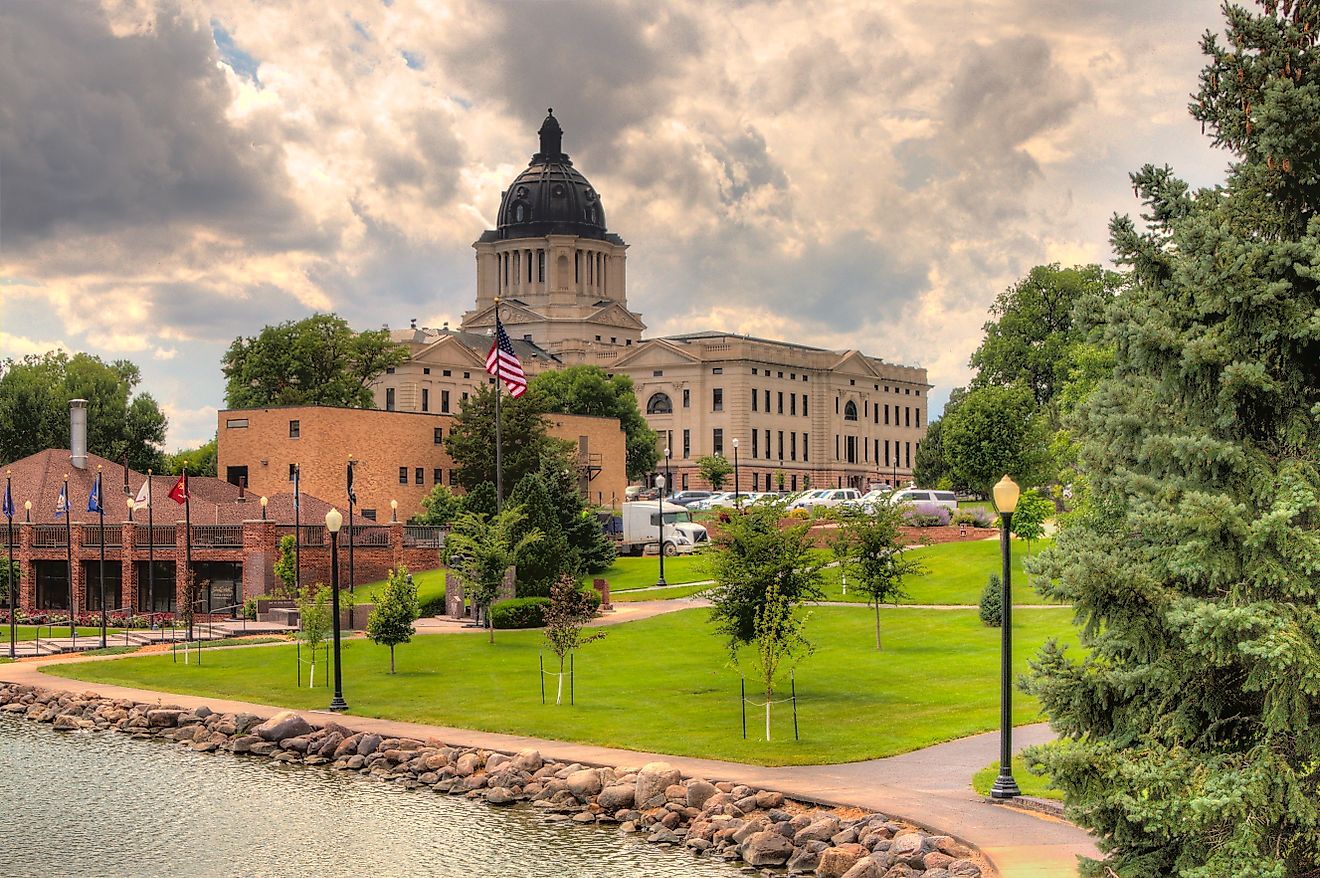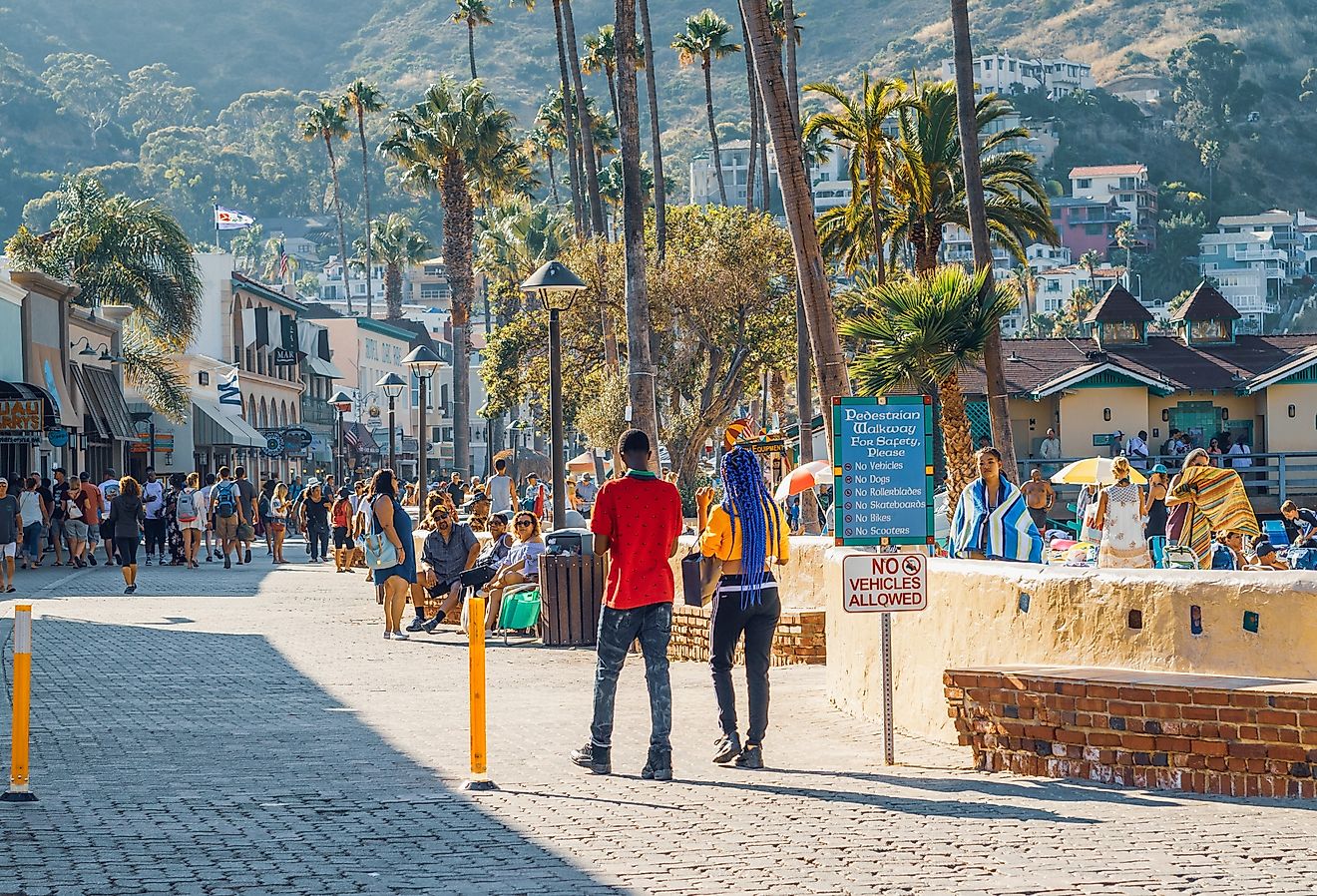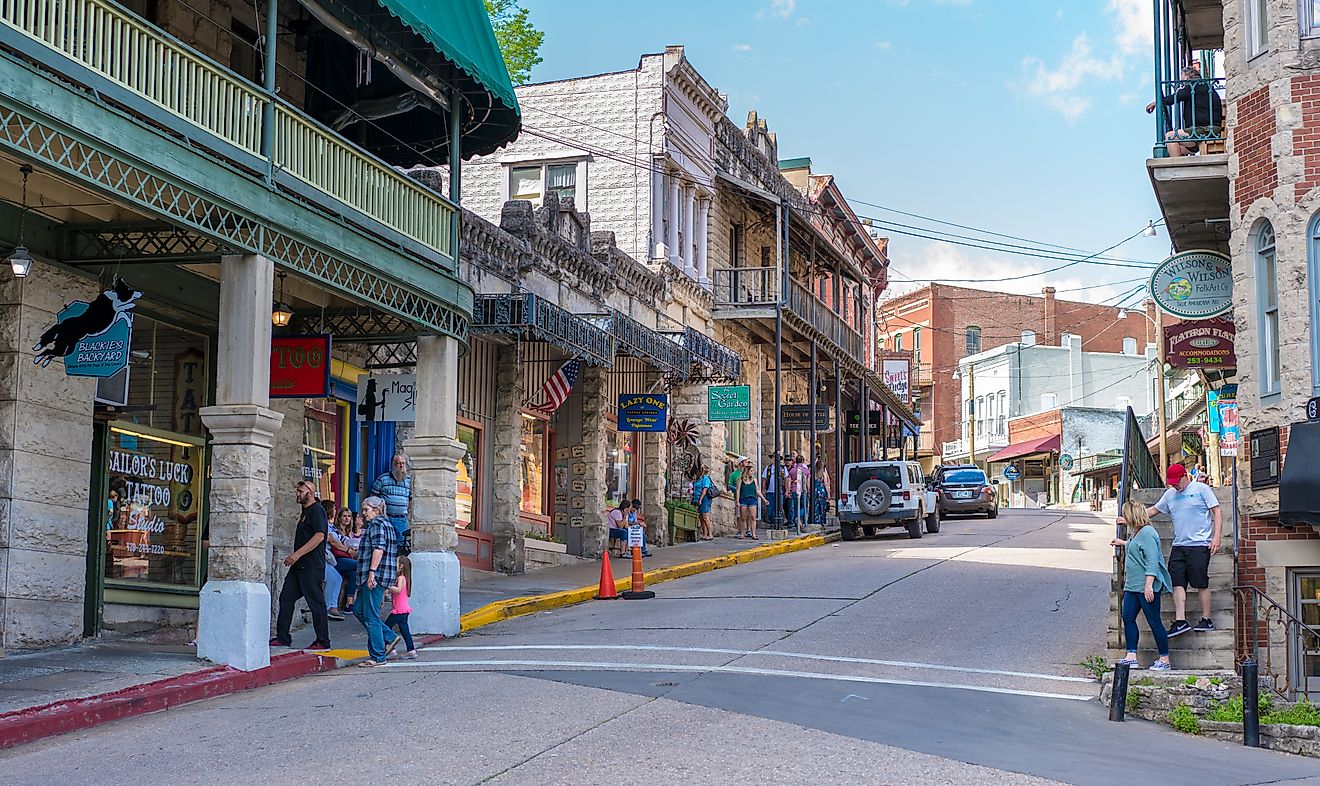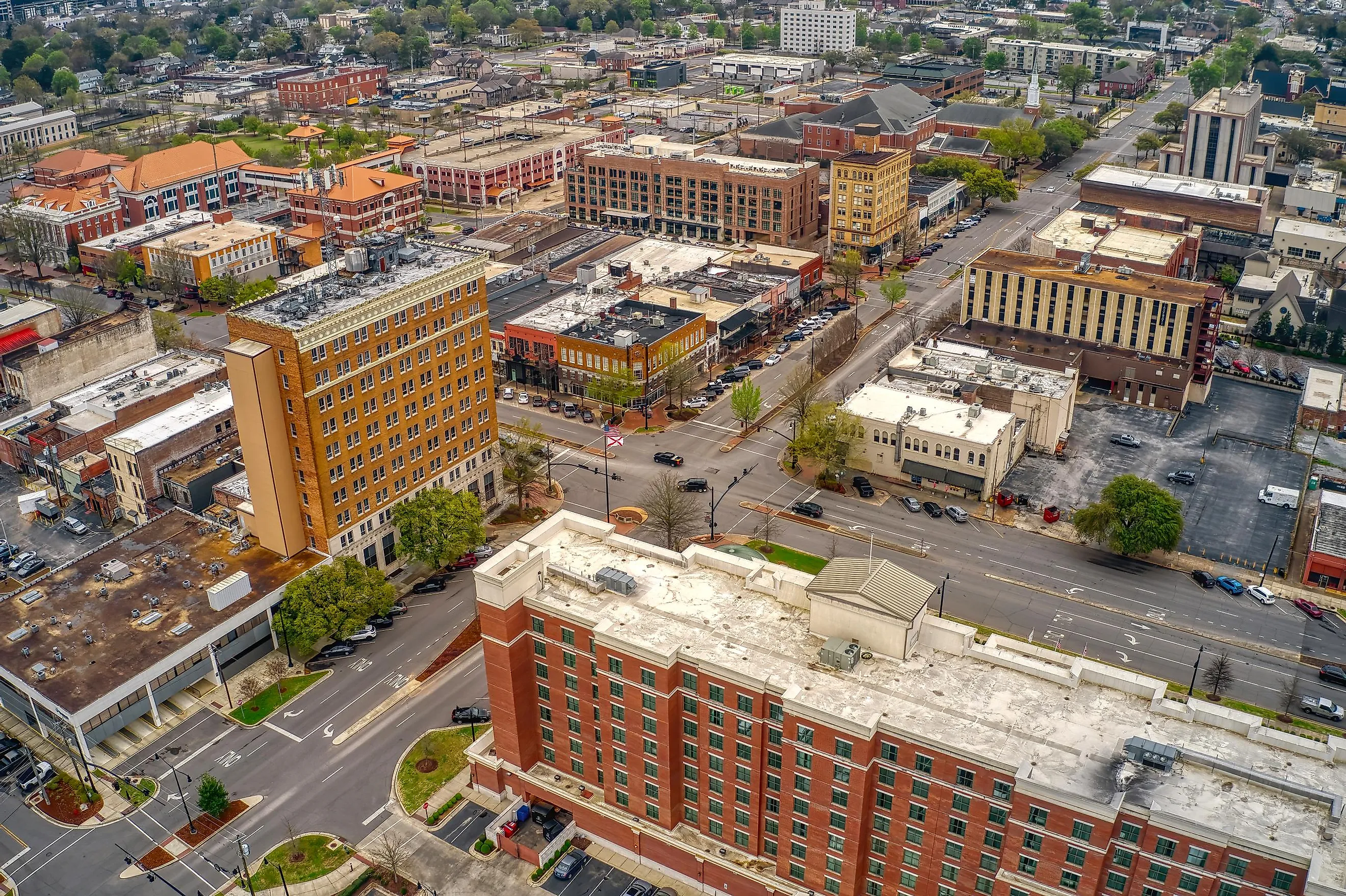
Tuscaloosa, Alabama
Tuscaloosa, the county seat of Tuscaloosa County, is a big city situated along the fall line of the Black Warrior River in the west-central portion of the US State of Alabama. Nicknamed “The Druid City” for the numerous water oaks in its downtown, Tuscaloosa is the state’s fifth-largest city. Named in honor of “Tuskaloosa,” the 16th-century chief of Muskogean-speaking tribes, the city served as the state capital from 1826 to 1846. Currently, the Tuscaloosa Metropolitan Statistical Area’s principal city and home to some reputed educational institutions, Tuscaloosa also serves as West Alabama’s regional commercial, industrial, educational, and healthcare center.
Geography Of Tuscaloosa
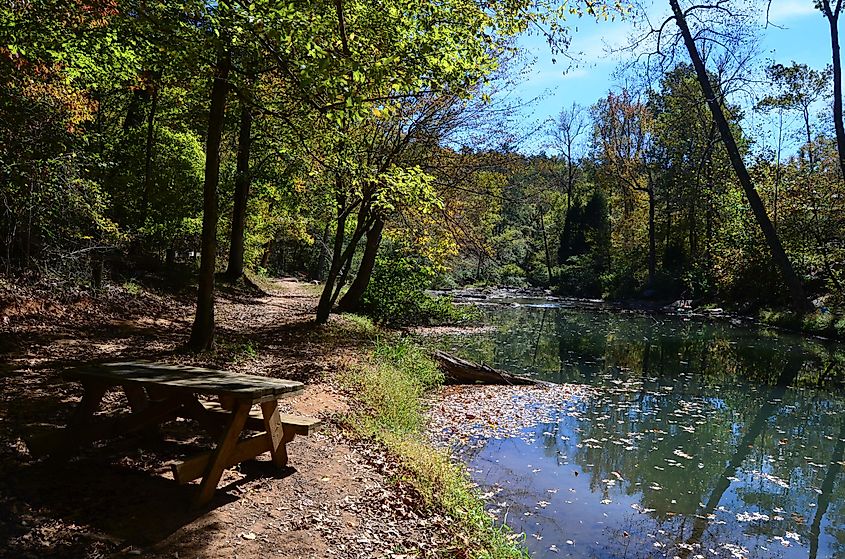
Placed on the boundary between the Gulf Coastal Plain and the Appalachian Highland, Tuscaloosa is about 60 miles southwest of Birmingham. The area has a diverse geography varying from lush forested hills in the northeast to low-lying marshy plains in the southwest. Tuscaloosa covers a total area of 70.3 sq. mi, of which 60.2 sq. mi is occupied by land and 10.2 sq. mi is covered by water.
Some of the significant areas included in the Tuscaloosa city proper include West Tuscaloosa, Downtown Tuscaloosa, Alberta City, Hillcrest, Midtown Tuscaloosa, North River, and the main campus of the University of Alabama. Located entirely within the city limits is Lake Tuscaloosa, a 5,885-acre reservoir formed by the construction of a dam on the North River. Created mainly to supply water for the city’s rising population as well as for industrial uses, Lake Tuscaloosa also offers many recreational activities for residents and visitors alike.
Climate Of Tuscaloosa
According to the Köppen Climate Classification, Tuscaloosa experiences a humid subtropical climate with long, hot, humid summers and short, cold winters, which is typical to the Deep South subregion of the Southern United States. The hot season lasts from mid-May to mid-September, where July is the year’s hottest month, having an average high temperature between 91°F and 72°F. The cold season lasts from mid-December to late February, where January is the year’s coldest month, having an average low temperature between 36°F and 56°F. The city experiences a fall season from mid-September to early December and a spring season from late February to mid-May.
During the fall, winter, and spring months, precipitation is created in Tuscaloosa by the close interaction between warm, moist air with the cool, dry air coming from the North along the weather fronts. The city gets an average yearly precipitation of 53.52 inches and an average seasonal snowfall of only 0.7 inches. During the Atlantic hurricane season, Tuscaloosa receives severe thunderstorms with strong winds, large hail, and occasionally tornadoes. In April 2011, the city was struck by two consecutive devastating tornadoes in a span of twelve days, which resulted in several deaths and substantial infrastructural damage.
History Of Tuscaloosa
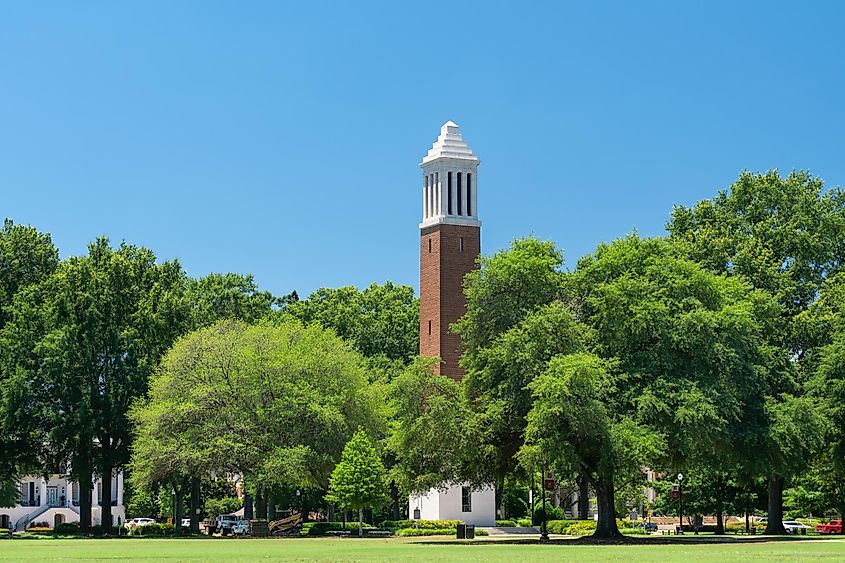
Following the War of 1812 and the availability of land initially inhabited by the Native Americans, the settlement rate of white settlers in the Southeast significantly increased. Close to a large Creek village at the fall line of the Black Warrior River, an array of log cabins was set up, which the new settlers named “Tuskaloosa” derived from the native Choctaw words “tushka,” which means ‘warrior’ and “lusa” which means ‘black.’ The territorial legislature incorporated the town on December 13, 1819. From 1826 to 1846, Tuscaloosa served as Alabama’s capital. With the establishment of the University of Alabama in 1831, the town’s population and economy grew significantly. However, this growth was relatively short-lived due to the relocation of the state capital to Montgomery. In 1850, the establishment of Bryce Hospital – the state’s oldest and biggest inpatient psychiatric facility by the State Legislature helped restore Tuscaloosa’s fortunes.
Nevertheless, the city was partially burned in April 1865 during the American Civil War, and its white population suffered economically. The US Army Corps of Engineers constructed a system of locks and dams in 1890 on the Black Warrior River, which improved navigation significantly. This further stimulated the economy and trading activities and led to the growth of various industries. During the Civil Rights Movement on June 9, 1964, a group of African-American people who were peacefully marching from the First African Baptist Church to the Tuscaloosa County Courthouse was brutally beaten, tear gassed, and arrested by police officers and a mob of angry white citizens. This event later came to be known as “Bloody Tuesday.” On December 13, 2019, the city of Tuscaloosa celebrated its “Bicentennial,” with many commemorative events throughout the day.
Population And Economy Of Tuscaloosa
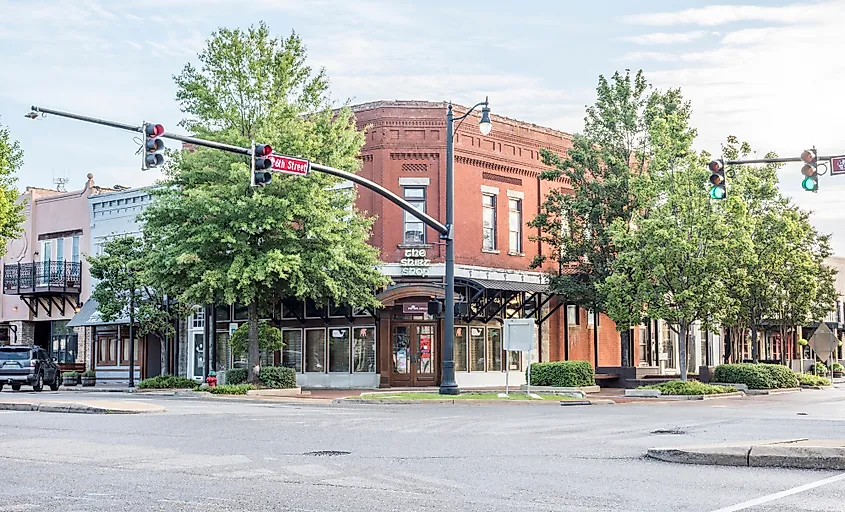
As per the latest US Census, Tuscaloosa has a population of 100,618 inhabitants with a median age of 34.6 and a population density of 1,607 inhabitants per sq. mi. The top ethnic groups in the city include White (Non-Hispanic) at 49.3%, Black or African American at 44.0%, American Indian and Alaska Native at 0.2%, Asians at 2.8%, Two or more races at 2.5%, Hispanic or Latino group at 4.4%, and White (Hispanic) at 47.4%.
Tuscaloosa has a median household income of $50,871 and a median property value of $165,800. The diverse economy of Tuscaloosa employs about 111,965 people. The city’s most prominent industries include Manufacturing, Health Care & Social Assistance, and Educational Services. The biggest universities in Tuscaloosa include the University of Alabama, Shelton State Community College, and Stillman College. The University of Alabama is the principal driver of the city’s economic and cultural activities, making Tuscaloosa an important college town.
About 25% of the Tuscaloosa Metropolitan Statistical Area’s labor force is employed by the federal, state, and local governments; 16.7% is employed in the manufacturing sector; 16.4% in transportation and retail trade; 10.3% in mining and construction; 11.6% in financial, information, and private enterprises; and 9.2% in hospitality services. Some major industries and manufacturing sectors significantly contributing to the city’s economy include BFGoodrich Tire Manufacturing, Hunt Refining Company, Nucor Steel, GAF Materials Corporation, JVC America, Phifer Wire, and Mercedes-Benz U.S. International assembly plant.
Attractions In And Around Tuscaloosa
Alabama Museum Of Natural History
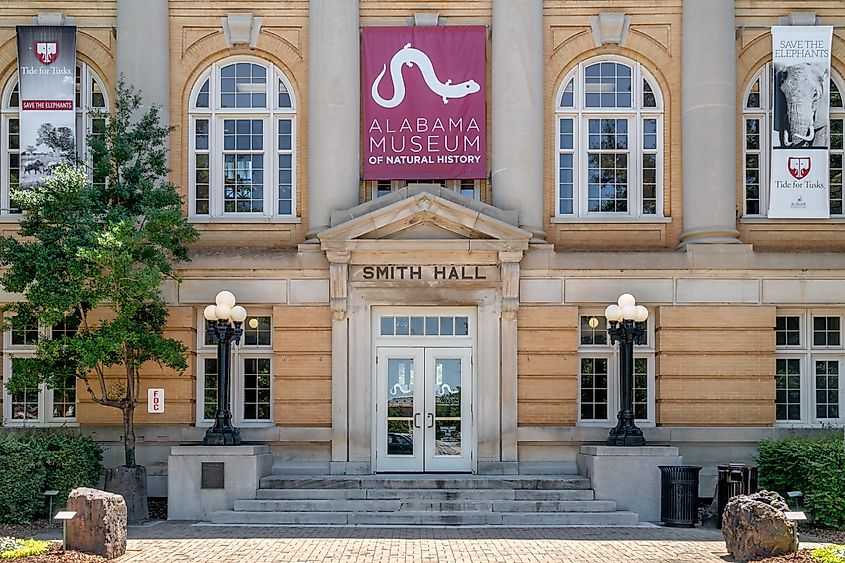
Located in Smith Hall on the campus of the University of Alabama, the Alabama Museum of Natural History is the state’s oldest natural history museum. Housed in glass and polished wood cases, the museum exhibits depict the state’s natural diversity spanning from the Age of Dinosaurs to the last Ice Age. The museum collection includes numerous invaluable specimens relating to different lines of scientific research, such as zoology, paleontology, geology, ethnology, mineralogy, etc. A replica of the Eocene whale – Basilosaurus cetoides, is housed in the Grand Gallery Exhibition Hall. Other exhibits that are of special attraction include an American mastodon’s skull and the Hodges meteorite, which fell on the Earth on November 30, 1954, close to the city of Sylacauga.
Bama Theatre
Located in downtown Tuscaloosa at the corner of Greensboro Avenue and Sixth Street, the historic Bama Theatre at present serves as the city’s main performing arts center. Originally constructed as a part of the New Deal in 1937, the Streamline Moderne exterior style building was designed by David Oliver Whilldin, a renowned architect from Birmingham. Home to many performance groups from the city, as well as its surrounding area, the Bama Theatre, is currently the most favored concert venue for touring performing artists. On August 30, 1984, the Bama Theatre was added to the National Register of Historic Places.
Coleman Coliseum
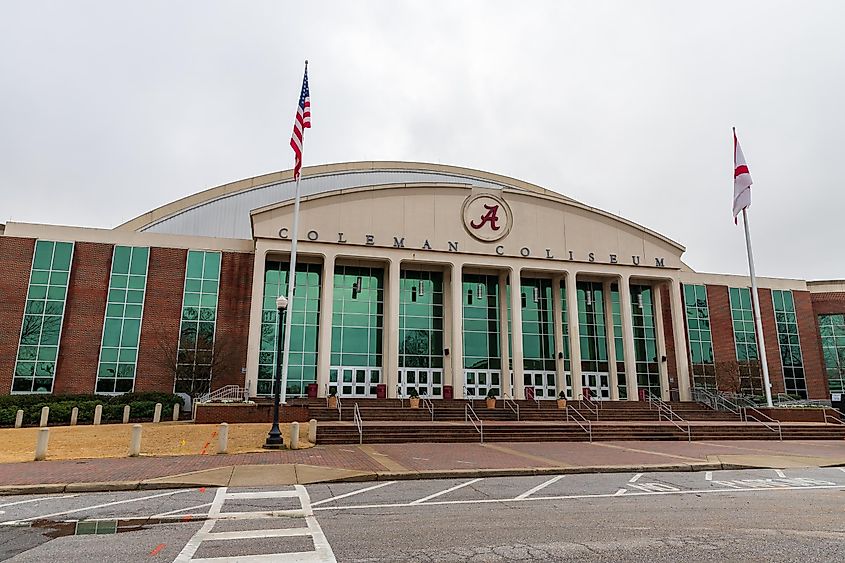
This 15,383-seat multipurpose arena is located at the heart of the athletic complex on the campus of the University of Alabama. Named after the well-known University alumnus Jefferson Jackson Coleman, the coliseum currently serves as the home of the men’s and women’s basketball teams of the Alabama Crimson Tide, as well as the women’s gymnastics teams. Besides its primary function as an athletic facility, the Coleman Coliseum has also served as a venue for musical concerts, artistic performances, and presidential appearances on various occasions.
University Of Alabama Arboretum
This 60-acre arboretum is situated close to the meeting point of the Pelham Loop Road and the Veterans Memorial Parkway. Primarily emphasizing on the state’s native flora and fauna, the arboretum includes 2.5 miles of walking trails through piney woods and an oak-hickory covered forest, a wildflower garden, a bog garden, a children’s garden, and an open-air pavilion. Except for being closed on a few major holidays, the arboretum remains open every day from sunrise to sunset.
Bryant-Denny Stadium
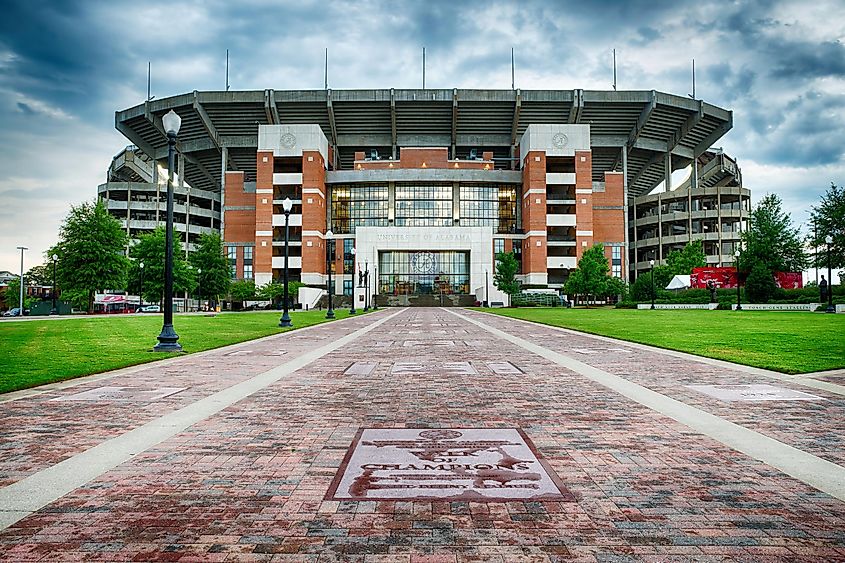
The home field of the football team of the Alabama Crimson Tide, this outdoor stadium is located on the campus of the University of Alabama. Named after the well-known head coach Paul William “Bear” Bryant, and the university president George H. Denny, the Bryant-Denny Stadium, with a seating capacity of 100,077, is the world’s 10th largest, the country’s 8th largest, and the Southeastern Conference’s 4th largest stadium. Recently, the stadium underwent a $107 million renovation which included the addition of multiple seating areas. Improvements were also made to all team areas, locker rooms, and recruiting rooms, as well as the addition of a student plaza on the southern side, large videoboards at the four corners, and the relocation of the press box to the eastern side.
In addition to the above-mentioned tourist attractions, the city hosts several annual festivals such as the Druid City Arts Festival, Moundville Native American Festival, Sakura Festival, Dickens Downtown, and Kentuck Festival of Arts, all of which attract thousands of tourists to Tuscaloosa every year. With picturesque locales, numerous tourist attractions, vibrant annual festivals, and pleasant weather all year round, visitors can spend some quality time and experience everything that this scenic city has to offer.

